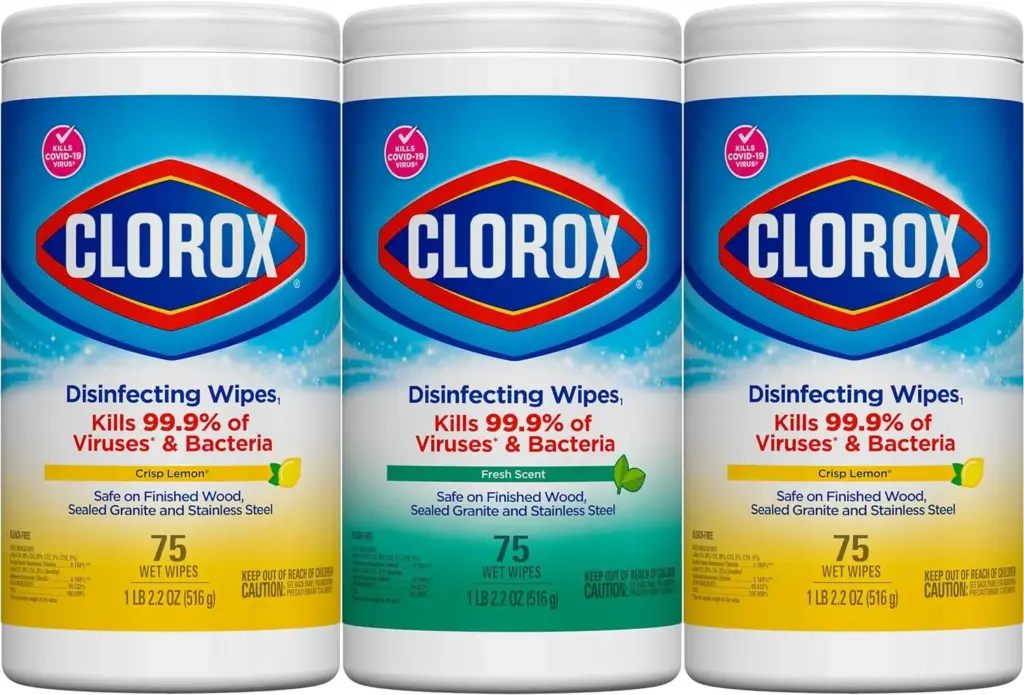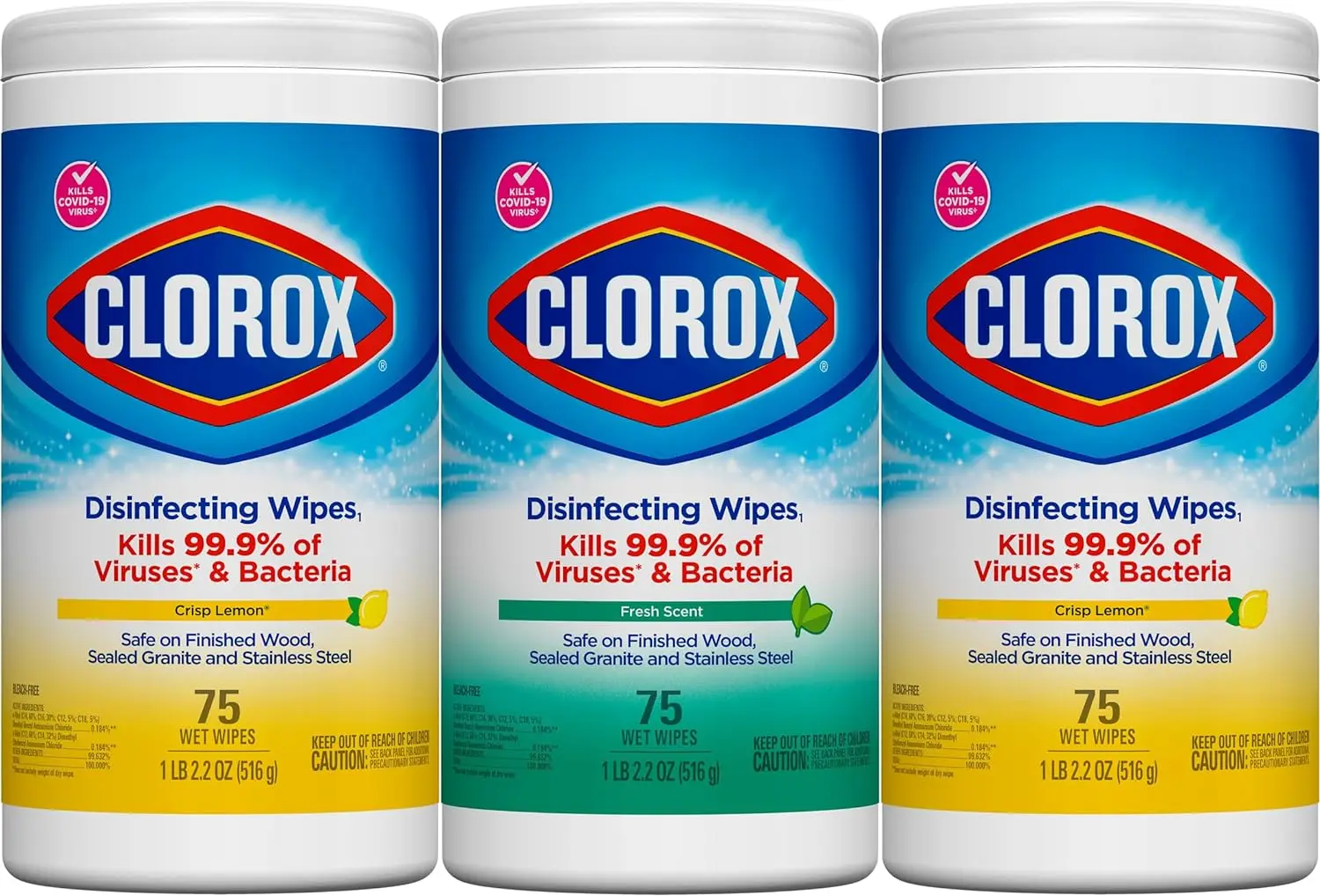
Are Clorox Wipes Baby Safe? A Comprehensive Guide for Parents
As parents, we’re constantly bombarded with information – and misinformation – about the products we use around our children. One common concern revolves around cleaning products, specifically whether items like Clorox wipes are baby safe. This article aims to provide a comprehensive, fact-checked guide to help you make informed decisions about using Clorox wipes around your little ones. We’ll delve into the ingredients, potential risks, and safer alternatives, ensuring you have the knowledge to keep your baby healthy and your home clean.
Understanding the Ingredients in Clorox Wipes
Clorox wipes are primarily designed for disinfecting surfaces, and their effectiveness stems from the active ingredients they contain. The main disinfecting agent is typically quaternary ammonium compounds, often referred to as “quats.” These chemicals are effective at killing a wide range of bacteria and viruses. However, it’s crucial to understand what these ingredients are and their potential impact on your baby’s health.
- Quaternary Ammonium Compounds (Quats): These are the active disinfecting ingredients. While effective, some quats can be irritants, especially for sensitive skin.
- Alcohol: Often included to enhance the disinfecting properties and aid in quick drying. Alcohol can also be drying to the skin.
- Surfactants: Help to lift dirt and grime from surfaces.
- Fragrances: Added for a pleasant scent, but can be a common source of allergies and irritation.
- Preservatives: Prevent the growth of bacteria and mold within the wipes themselves.
Potential Risks of Using Clorox Wipes Around Babies
While Clorox wipes are effective disinfectants, it’s essential to consider the potential risks associated with their use, especially concerning babies. Babies are more vulnerable to the harmful effects of chemicals because of their developing immune systems and their tendency to put things in their mouths. Here’s a breakdown of the key concerns:
Skin Irritation and Allergies
A baby’s skin is much more delicate than an adult’s. The chemicals in Clorox wipes, particularly quats, alcohol, and fragrances, can cause skin irritation, redness, and dryness. Some babies may even develop allergic reactions, leading to rashes and discomfort. Repeated exposure can exacerbate these issues.
Ingestion Concerns
Babies explore the world by putting things in their mouths. If a surface cleaned with Clorox wipes is not properly rinsed and dried, there’s a risk that a baby could ingest residual chemicals. While the amount ingested might be small, repeated exposure can be concerning. Symptoms of ingestion can include nausea, vomiting, and diarrhea. It is important to note that Clorox wipes are not intended to be used on skin.
Respiratory Issues
The fumes from Clorox wipes can irritate a baby’s respiratory system, especially if they have asthma or other respiratory conditions. The volatile organic compounds (VOCs) released by the wipes can trigger coughing, wheezing, and difficulty breathing. Ensure proper ventilation when using these wipes.
When Can You Safely Use Clorox Wipes Around Babies?
Despite the potential risks, there are situations where using Clorox wipes might be necessary. The key is to use them cautiously and follow specific guidelines to minimize your baby’s exposure.
- Cleaning High-Touch Surfaces: Use Clorox wipes to disinfect surfaces that are frequently touched, such as doorknobs, light switches, and countertops.
- Public Spaces: When you’re in public places like restaurants or playgrounds, Clorox wipes can be useful for cleaning surfaces before your baby touches them.
- Diaper Changing Areas: Disinfecting the diaper changing area after each use can help prevent the spread of germs.
How to Minimize Risks When Using Clorox Wipes
If you choose to use Clorox wipes around your baby, take these precautions to reduce the potential risks:
- Ventilate the Area: Always use Clorox wipes in a well-ventilated area to minimize exposure to fumes. Open windows or turn on a fan.
- Rinse and Dry Surfaces: After wiping a surface, rinse it thoroughly with water and dry it completely. This helps remove any residual chemicals.
- Keep Out of Reach: Store Clorox wipes out of your baby’s reach to prevent accidental ingestion.
- Wash Your Hands: After using Clorox wipes, wash your hands thoroughly with soap and water.
- Consider Alternatives: Explore safer alternatives, such as natural cleaning products or soap and water.
Safer Alternatives to Clorox Wipes for Baby-Related Cleaning
Fortunately, many safer alternatives to Clorox wipes can effectively clean and disinfect without exposing your baby to harsh chemicals. Here are some options to consider:
Soap and Water
Good old-fashioned soap and water are often the best and safest option for cleaning. They effectively remove dirt and germs without leaving behind harmful residues. Use a mild, fragrance-free soap to avoid irritating your baby’s skin.
Vinegar and Water Solution
A solution of equal parts vinegar and water can be a powerful and natural cleaning agent. Vinegar has antibacterial properties and can effectively clean various surfaces. The smell dissipates quickly, leaving a clean and fresh scent. This simple solution is a safe and effective alternative to Clorox wipes when considering what is baby safe.
Baking Soda Paste
Baking soda is a gentle abrasive that can be used to clean stubborn stains and messes. Make a paste by mixing baking soda with a small amount of water and apply it to the surface. Let it sit for a few minutes, then scrub and rinse. This is a great option for cleaning kitchen surfaces and bathroom fixtures.
Essential Oil-Based Cleaners
Some essential oils, such as tea tree oil and lavender oil, have antibacterial and antifungal properties. You can create a natural cleaning spray by mixing a few drops of essential oil with water in a spray bottle. Be sure to research the safety of essential oils before using them around babies, as some can be harmful. Always dilute essential oils properly. [See also: Essential Oils for Baby Safety]
Baby-Safe Cleaning Wipes
Many brands offer cleaning wipes specifically designed for babies. These wipes typically use gentler ingredients and are free from harsh chemicals, fragrances, and alcohol. Look for wipes that are labeled as hypoallergenic and dermatologist-tested. These are often a better choice than Clorox wipes when ensuring you use products that are baby safe. [See also: Best Hypoallergenic Baby Wipes]
Reading Labels and Understanding Safety Certifications
When choosing cleaning products, it’s crucial to read labels carefully and understand safety certifications. Look for products that are labeled as:
- Non-toxic: Indicates that the product does not contain ingredients known to be harmful.
- Hypoallergenic: Means the product is less likely to cause allergic reactions.
- Fragrance-free: Reduces the risk of skin irritation and respiratory issues.
- EPA Registered: If you are looking for a disinfectant, ensure it is registered with the Environmental Protection Agency (EPA). This indicates that the product has been tested and approved for its intended use.
Also, consider products with certifications like the Environmental Working Group (EWG) Verified™ mark, which indicates that the product meets strict safety standards. [See also: EWG Verified Cleaning Products]
Conclusion: Making Informed Choices for Your Baby’s Health
Ultimately, the decision of whether or not to use Clorox wipes around your baby is a personal one. While they can be effective disinfectants, it’s essential to weigh the potential risks against the benefits. By understanding the ingredients, taking precautions, and exploring safer alternatives, you can make informed choices that prioritize your baby’s health and well-being. Remember, a clean home doesn’t have to come at the expense of your baby’s safety. Always prioritize products and methods that are known to be baby safe.

